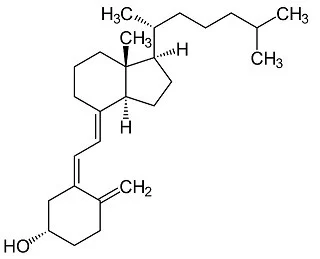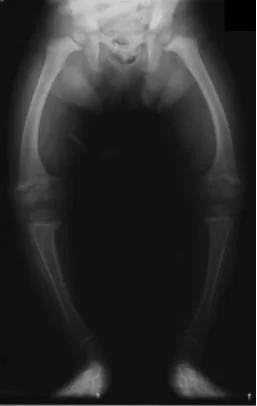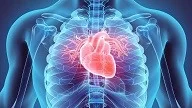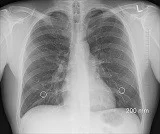Vitamin D: The Sunshine Vitamin – Benefits, Sources, and Risks

Vitamin D is a fundamental nutrient for achieving optimal health and wellness. It has earned the apt moniker of “sunshine vitamin” because it can be produced from exposure to sunlight; however, many individuals suffer from a deficiency due to inadequate sun absorption, an unhealthy diet, or other external factors. This blog post will explore its advantages, sources, potential threats, and recent discoveries about Vitamin D’s relevance in our lives.
What is vitamin D?

Vitamin D is a potent vitamin found shortly after Vitamins A, B, and C. In fact, it was initially discovered in Cod Liver Oil to be an ‘anti-rachitic’ compound that helps treat rickets. This fat-soluble nutrient is fundamental for the body’s optimal functioning – it aids with calcium and phosphorus absorption required for strong bones and teeth; affects immune system performance; encourages cell growth; and reduces inflammation levels.
What are vitamin D’s main benefits?
Vitamin D is a nutrient that supports numerous physical, mental, and emotional benefits! Not only does it assist in the absorption of calcium and phosphorus for bone health, but it also reduces your risk of osteoporosis or fractures. On top of that, Vitamin D enhances muscle strength while providing immune system support to protect against infections. Moreover, studies have shown a correlation between regular Vitamin D intake with lower risks associated with certain types of cancer – especially breast cancer – as well as improved overall moods & reduction in symptoms related to depression & anxiety.
What are vitamin D’s main drawbacks?
Vitamin D is an essential nutrient for your health, but too much of it can be detrimental. The side effects of excessive vitamin D supplementation are nausea, vomiting, constipation, weakness, and weight loss. Additionally, extreme vitamin D levels in the blood could lead to hypercalcemia – a condition characterized by high calcium levels that may damage organs such as the heart, blood vessels, or kidneys.
How does vitamin D work?
By allowing sunlight to reach the skin, cholecalciferol is produced – a form of vitamin D. The liver and kidneys convert this into calcitriol – the active version of vitamin D that has many health benefits.
What else is Vitamin D known as?
Vitamin D is also known as Calciferol, Cholecalciferol, and Ergocalciferol
Medical Disclaimer:
This blog does not replace professional medical advice, diagnosis, or treatment. If you have any questions regarding your health and well-being, it’s always best to consult your physician or a healthcare provider who can offer qualified guidance.
Sources and Intake
Food Sources
Vitamin D is present in plenty of fruits, such as Cod liver oil, eggs and yolks, cheese, and beef liver. In addition to these natural sources, some mushrooms are cultivated with high ultraviolet light exposure, which increases vitamin D2 content. Various other products contain Vitamin D, too – like milk or fortified cereals. Finally, synthesis rates from the sun depend on several factors that can affect absorption levels. Location plays a significant role in how much vitamin D is synthesized and an individual’s skin tone. It has been observed that those living above 42.2°N latitude (Boston) experience zero UVB-induced vitamin D production during winter months, lasting up to 6 months at 55°N (Edmonton). On the other hand, Vitamin D can still be produced within 18–32°N, even in winter months!


Recommended Amounts
Vitamin D is essential to your daily diet if you’re looking to maintain bone health. The recommended allowance for adults over 60 with a body weight of above 120 lbs is 500 IU (15 mcg per day). However, if taken in excess – i.e., more than 2 g/day – it won’t cause harm; the upper-level intake limit has been set at 400IU (100 milligrams) / ml/mcg by experts. Unfortunately, though, most individuals don’t meet this minimal requirement, and that can have severe repercussions on their overall well-being.
Cholecalciferol, or Vitamin D3, is the far superior choice when considering supplementation over ergocalciferol (Vitamin D2). Studies have proven that cholecalciferol successfully raises blood levels more effectively than its predecessor.
Are Vitamin D3 and D2 Supplements Distinctly Different from One Another?
In dietary supplement stores, you will find two vitamin D forms: D2 and D3. This is a plant-based nutrient that can be found in fortified meals and supplements, as well as at home. Its metabolites are also present in animal foods. Studies suggest that getting enough vitamin D3 (cholecalciferol) through supplementation could help to raise your blood levels of the nutrient. Randomized studies have yielded positive results for both types, demonstrating how taking either one or both regularly may increase levels over time and prolong their effects overall.
The Hazards of Consuming Too Much Vitamin D
Vitamin D can be dangerous, as it allows for higher calcium absorption into the gut, resulting in excessive calcium circulating through our bodies. This condition is referred to as hypercalcemia and may manifest various unpleasant side effects.
People Who May Be at Risk of Vitamin D Deficiency
Obtaining vitamin D from dietary sources is not easy, yet it’s an essential nutrient for maintaining overall health in the United States. Unfortunately, select groups must rely on nutritional supplementation due to limited exposure to this critical element. Breastfed infants are among those most likely affected by a lack of Vitamin D as human milk does not have enough — averaging just 0.65 g of dietary fiber / l (25 – 79 mg per kg).

Research Overview
Scientists have been studying the effects of vitamin D for several years now, and they’ve determined that it can help your bones stay strong, keep you healthy, and even reduce cancer risk. To further investigate this topic, experts performed meta-analyses and systematic reviews to ratify the success of taking vitamin D supplements.
Latest Research
The Association between Vitamin D Deficiency and Breast Cancer
Recent investigations have suggested a potential correlation between low levels of vitamin D and an increased risk of breast cancer. One analysis unveiled that individuals with lower concentrations of this nutrient were more likely to experience malignant cancers, including triple-negative breast cancer, which was found to possess significantly diminished serum vitamin D compared to hormone-positive cancers. Moreover, higher density in the breasts is also correlated with reduced amounts of Vitamin D.
Vitamin D Supplementation for Nonalcoholic Fatty Liver Disease (NAFLD)
Vitamin D supplementation has been established to promote positive outcomes for adults with vitamin D deficiency/insufficiency and NAFLD. An extensive meta-analysis recently revealed that supplementing with vitamin D notably improved insulin resistance in this population, making it an essential component of care.
Vitamin D and Outcomes after COVID-19 Diagnosis
Although vitamin D is often advertised as being beneficial to respiratory health, recent findings demonstrate that taking it after diagnosis has a limited effect on COVID-19 fatalities. After a comprehensive review of the available evidence, researchers concluded that vitamin D supplementation had no impact in reducing the duration of hospitalization, ICU admissions, or need for mechanical ventilation amongst those hospitalized with COVID-19.
Vitamin D Supplementation During Pregnancy
An experimental study examined the most efficient dosage of vitamin D supplementation for a successful pregnancy. The findings indicated that supplementing 2,000 and 4,000 IU/day of vitamin D can reduce the likelihood of maternal or infant deficiency. However, it does not ensure positive birth results.
Vitamin D and American Football Players
This new research on American professional football players demonstrates that those with reduced vitamin D levels are more likely to suffer a fracture and be released before the season begins. The data illustrates the magnitude of maintaining proper vitamin D amounts, especially for athletes striving to reach peak performance.
Research Breakdown
Lifespan and Extension
Studies have determined that there is an undeniable link between low vitamin D levels and all-cause mortality, regardless of gender or race. An examination of NHANES data revealed a 6-11% per 10nmol/L decrease in all-cause mortality for every increase in circulating Vitamin D levels. Still, after adjusting for any confounding factors, this association was only marginally significant. An expansive review of clinical trials, mainly among the elderly population, concluded that only vitamin D3 supplementation was linked with a significant reduction in all-cause mortality risk at 0.94 relative risks.
Neurology

Vitamin D may be able to protect the brain from cell death due to excitotoxicity by managing calcium in cells and influencing certain types of calcium channels. Research results on vitamin D’s influence on cognitive abilities are mixed, with some studies pointing toward improvements regarding visual memory while others observed no effect. Although there is still much to be studied, potential therapeutic benefits of Vitamin D have been identified for diseases such as Multiple Sclerosis and Alzheimer’s. Low vitamin D levels may put individuals at an increased risk of developing these conditions. Studies conducted on its impacts on depression vary in findings, with some showing improvement after a high-dose supplementation, while other studies found no effects. Furthermore, research suggests that taking Vitamin D could improve sleep quality – yet more comprehensive investigations are needed to confirm this relationship.
Cardiovascular Health

Recent research has indicated a correlation between Vitamin D levels and cardiovascular health. Some studies indicate that moderate to high vitamin D supplementation may reduce the risk of heart disease. Nonetheless, results from individual trials have been varied; while some show no significant benefit at all. It is believed that Vitamin D works by regulating the renin-angiotensin system, which in turn helps decrease blood pressure among people suffering from hypertension – however, this effect could be weak depending on an individual’s health status. Moreover, mice lacking the vitamin D receptor have also exhibited cardiac hypertrophy (enlargement) in their hearts. Recent studies have shown that taking Vitamin D supplements in doses of 3320IU/d can significantly enhance your cardiovascular health while helping you lose weight. Supplementation with Vitamin D has been correlated to reduced levels of red blood cells, hemoglobin, and hematocrit, decreasing arterial stiffness and brachial flow-mediated dilation associated with peripheral artery disease.
Diabetes

Intriguing research has revealed a connection between Vitamin D deficiency and the raised possibility of Type 2 Diabetes or exacerbation in those with Type 1. Fortunately, replenishing one’s vitamin D can increase insulin sensitivity and glucose control markers, even when individuals suffer from major depressive disorder! Furthermore, adequate levels of this crucial nutrient have proven to be efficient at diminishing the risk of developing Type 2 Diabetes.
Sport Performance

Supplementation with Vitamin D could be beneficial for athletes who lack the nutrient. Studies have seen improved muscle recovery and power output when supplemented with 4000IU of Vitamin D daily over six weeks. This was observed in healthy young men after eccentric exercise as well as sedentary overweight/obese adults participating in resistance training. Nevertheless, Vitamin D deficiency has been correlated with an alarming rise in injuries and illnesses among athletes—particularly stress fractures. Studies suggest that NFL players whose Vitamin D levels are under 75 nmol/L are a whopping 64% more likely to sustain an injury than those who maintain adequate levels!
Skeleton and Bone Metabolism

Osteoblasts are an integral part of the construction of bone tissue, for they express CYP27B1, which converts 25-hydroxy calciferol (an inactive form of vitamin D) into active 1,25-dihydroxy calciferol. Furthermore, Vitamin D receptors found on osteoblasts regulate their multiplication and aid in the mineralization process that is necessary to construct healthy bones. In short, Vitamin D plays a significant role in shaping our skeleton structure!
Recent studies have revealed that higher vitamin D levels in young adults can effectively lower the risk of fractures, mainly when serum concentrations range from 20-50 ng/mL. Additionally, supplementation with vitamin D has been proven to reduce fracture rates for both adolescents and elderly individuals suffering from Parkinson’s Disease.
Supplementing elderly people with vitamin D has been demonstrated to possibly reduce the risk of falls, yet this effect is limited if the individual’s serum levels are within a normal range. Furthermore, research indicates that there is no correlation between pain or severity of osteoarthritic symptoms and one’s serum vitamin D levels. Studies have not uncovered any significant effects on joint pain related to osteoarthritis from supplementation with Vitamin D.
Skin

A meta-analysis of nine studies investigating the effects of vitamin D supplementation has revealed that although there is a trend towards reduced symptoms, it does not actually cure atopic dermatitis (AD). This suggests that low levels of Vitamin D may be associated with more severe AD symptoms; however, much further research needs to be done to determine its underlying cause.
Hormones
Research has found that Vitamin D plays an essential role in hormonal balance. Once your Vitamin D levels reach 75-100 nmol/L, it is actually associated with lower parathyroid hormone concentrations. Furthermore, studies have proven the supplementation of this vitamin to normalize testosterone levels while controlling the activity of the aromatase enzyme, which produces estrogens from androgens. Additionally, a lack of the vitamin D receptor can increase follicle-stimulating & luteinizing hormone production in mice too!
Cancer

Invigorating research has uncovered a connection between Vitamin D and lower risks of several types of cancer. A 2000IU intake daily could cut the risk of breast cancer by 50%, while 600IU is enough to help ward off pancreatic cancers. Even more riveting, studies have also discovered an inverse correlation between serum levels of this essential nutrient and colorectal cancers – when supplementing with 2000IU each day, researchers documented that people experienced a massive reduction in their odds (by up to half). Studies have found that cancer patients with higher levels of Vitamin D tend to have lower Body Mass Index (BMI), suggesting they may require additional amounts of the vitamin. Additionally, exposure to UVB radiation – which produces Vitamin D – has been correlated to a diminished risk of ovarian cancer in women.
Lungs

Vitamin D appears to impact lung function in healthy adults positively. Research has linked low levels of Vitamin D to higher corticosteroid use among asthmatic children, and daily supplementation with 1200IU was correlated with fewer asthmatic attacks. Moreover, smokers with adequate amounts of Vitamin D were observed to have better lung function than those without sufficient intake. Research suggests that Vitamin D supplementation may decrease the likelihood of catching the flu and reduce one’s risk for active tuberculosis. In addition, it appears to play a role in sleep quality as well; those suffering from Obstructive Sleep Apnea (OSA) typically have lower levels of Vitamin D than others – with more severe symptoms corresponding to even lower amounts. Unfortunately, monthly injections of this vitamin were unsuccessful in significantly reducing Upper Respiratory Tract Infections.
Sperm

Evidence demonstrates that Vitamin D interacts heavily with the male reproductive system and has receptors located in organs like the testes, epididymis, seminal vesicles, prostate, and sperm cells. Additionally, research indicates that an adequate level of Vitamin D may increase calcium content within sperm and improve its motility for better semen quality. The suggested ideal range of serum Vitamin D for optimal fertility is between 20-50ng/mL; levels below or above this range have been associated with infertility issues.
Pregnancy

Pregnant women, especially during the first trimester, are highly susceptible to Vitamin D deficiency. This lack of adequate Vitamin D can lead to lower birth weights and a greater chance that offspring will develop type 1 diabetes or asthma/rhinitis. Additionally, it raises the likelihood of mothers needing cesarean sections. Unfortunately, one-time doses of 200 000IU or daily dosages of 800IU are not enough as proper levels demand daily intakes between 2 000 – 4 000 IU; pregnant women may even need higher amounts than non-pregnant individuals to achieve desired results.
Safety and toxicity
Vitamin D3 supplementation has been linked to a lower risk of mortality and an increased chance of developing nephrolithiasis. Additionally, high amounts of Vitamin D in the serum can lead to esophageal squamous dysplasia. Too much Supplementation with Vitamin D, however, may cause hypercalcemia which becomes especially worrisome for those suffering from kidney disease, as it leads to various signs such as nausea and loss of appetite that could potentially damage your heart, bones, or kidneys if left untreated.
Frequently asked questions:
What are the signs you need vitamin D?
Prolonged vitamin D deficiency can result in undesirable symptoms such as fatigue, lack of sleep, bone discomfort, depression, constant sighing, and a weakened immune system. Moreover, it may also cause hair loss and muscle weakness. Consequently, those affected will find themselves with a decreased appetite which can lead to further health implications if not addressed properly.
What foods are highest in vitamin D?
A single tablespoon of cod liver oil contains around 1.6 grams of vitamin D! Delicious and nutritious options to increase your daily intake include salmon, sardines, fish, orange juice, chicken livers, and egg yolks as enriched cereals.
How can I increase my vitamin D naturally?
If you’re looking for additional sources of vitamin D, fortified milk products like yogurt and cereals are always a great option. For example, Cheerios provide 60 IU of vitamin D with every serving! Additionally, don’t forget to look into dietary supplements; they will help ensure that your body receives enough Vitamin D daily.
Can I get enough vitamin D from sunlight?
Different amounts of vitamin D are produced by the body when exposed to sunlight, depending on variables such as time of day and geographic location. Fifteen minutes can usually be enough sunshine for most people; however, one must take caution with exposure to UV rays and wear sunscreen when needed for protection against skin damage.
What are good food sources of vitamin D?
Add more fatty fish like tuna, salmon, and mackerel to your diet to get adequate vitamin D. You can also find this beneficial nutrient in cod liver oil, certain mushrooms, fortified dairy products, and some breakfast cereals.
Should I take a vitamin D supplement?
For those at risk of vitamin D deficiency due to restricted sun exposure or inadequate nutrition, a supplement may be advantageous. However, before you initiate any supplementation regimen, make sure to consult with your healthcare provider first in order to determine the suitable dosage.

